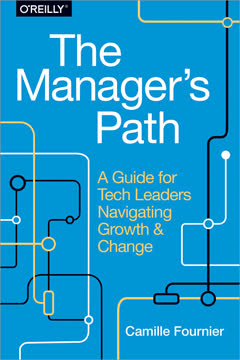Key Takeaways
1. Embrace the small things: Leadership is built on consistent practices
"Small Things, Done Well is packed with real-world experience and practical actions that you can act on today to help become a better leader."
Leadership is a craft. It's not about grand gestures or revolutionary ideas, but rather the consistent application of small, effective practices. These "small things" include:
- Regular 1:1 meetings with team members
- Active listening and asking thoughtful questions
- Providing timely and constructive feedback
- Recognizing and celebrating team achievements
By focusing on these seemingly minor actions, leaders can create a positive and productive work environment. Over time, these practices compound, building trust, improving communication, and fostering a culture of continuous improvement.
2. Delegate and trust: Empower your team to grow
"Delegation isn't just how you'll scale yourself—it's how you'll build leadership within your team."
Effective delegation is crucial. Many new managers struggle with letting go of tasks they once performed, fearing a loss of control or quality. However, delegation is essential for both the leader's growth and the development of team members. To delegate effectively:
- Clearly communicate expectations and desired outcomes
- Provide necessary resources and support
- Allow for mistakes and use them as learning opportunities
- Gradually increase responsibilities as team members demonstrate capability
By trusting your team and giving them opportunities to lead, you not only free up your time for higher-level tasks but also cultivate future leaders within your organization.
3. Master the art of effective communication
"The reason meetings have evolved as an acceptable first response is because they address one key issue: they give the team an opportunity to discuss their perceptions of the change."
Communication is the lifeblood of leadership. Effective leaders must be able to convey ideas clearly, listen actively, and facilitate productive discussions. Key communication strategies include:
- Running efficient meetings with clear agendas and action items
- Adapting communication style to different audiences and situations
- Using storytelling to make complex ideas more relatable and memorable
- Encouraging open dialogue and creating safe spaces for dissenting opinions
Remember that communication is not just about conveying information, but also about building relationships and aligning teams towards common goals.
4. Cultivate a culture of feedback and continuous improvement
"Feedback is a gift."
Feedback drives growth. Creating an environment where feedback is freely given and received is essential for individual and organizational improvement. To foster a feedback culture:
- Lead by example: actively seek feedback on your own performance
- Provide specific, actionable feedback in a timely manner
- Encourage peer-to-peer feedback
- Use formal feedback mechanisms (like 360-degree reviews) alongside informal, ongoing conversations
Remember that feedback should be balanced, focusing on both strengths and areas for improvement. By normalizing feedback, you create a culture of continuous learning and adaptation.
5. Navigate organizational politics with integrity
"Politics are a natural development in a large group of humans working together. Corrosive politics give me rage."
Politics are inevitable, but they don't have to be toxic. Effective leaders must learn to navigate organizational politics while maintaining their integrity. Strategies for positive political engagement include:
- Building strong relationships across the organization
- Understanding and aligning with organizational goals
- Being transparent about your intentions and decision-making processes
- Addressing conflicts and misunderstandings directly and professionally
By approaching politics with integrity, leaders can harness its positive aspects (like building coalitions and driving change) while minimizing its negative impacts.
6. Foster innovation while maintaining efficiency
"There is no trick other than carving out time every single day to do the job of recruiting."
Balance innovation and execution. Leaders must create an environment that encourages creative thinking and risk-taking while ensuring that day-to-day operations run smoothly. To achieve this balance:
- Allocate dedicated time and resources for innovation projects
- Encourage cross-functional collaboration to spark new ideas
- Implement processes for evaluating and implementing innovative ideas
- Celebrate both successful innovations and valuable lessons from failures
Remember that innovation isn't just about breakthrough technologies; it can also involve incremental improvements to existing processes and products.
7. Prioritize personal growth and self-reflection
"Each month, ask yourself how you are investing in your growth."
Leaders must continuously evolve. The most effective leaders are those who prioritize their own growth and self-awareness. To foster personal development:
- Seek out mentors and coaches
- Regularly reflect on your experiences and lessons learned
- Stay curious and open to new ideas and perspectives
- Invest in both technical and soft skills development
Consider keeping a leadership journal to track your progress and insights over time. Remember that your growth as a leader directly impacts your team's success.
8. Be the leader your team needs: Adaptable and empathetic
"Be unfailingly kind."
Leadership is not one-size-fits-all. Great leaders adapt their style to the needs of their team and the situation at hand. Key aspects of adaptive leadership include:
- Understanding the strengths, weaknesses, and motivations of each team member
- Recognizing when to be directive and when to step back and empower others
- Showing empathy and emotional intelligence in interactions with team members
- Remaining calm and composed during times of crisis or uncertainty
By being adaptable and empathetic, leaders can create an environment where team members feel supported, valued, and motivated to do their best work.
Last updated:
FAQ
What's "The Art of Leadership: Small Things, Done Well" about?
- Focus on Leadership Practices: The book by Michael Lopp is about refining leadership through small, actionable practices that can be implemented daily to improve leadership skills.
- Storytelling Approach: Lopp uses storytelling to convey lessons, making the concepts relatable and easier to understand.
- Leadership Journey: It shares Lopp's personal leadership journey, offering insights into the challenges and successes he encountered.
- Practical Advice: The book is filled with real-world experiences and practical actions that readers can apply immediately to become better leaders.
Why should I read "The Art of Leadership: Small Things, Done Well"?
- Actionable Insights: The book provides actionable advice that can be implemented immediately to improve leadership skills.
- Real-World Experience: It is based on Lopp's extensive experience in leadership roles at major tech companies, offering valuable insights.
- Storytelling Method: The use of storytelling makes complex leadership concepts more accessible and engaging.
- Focus on Small Changes: It emphasizes the power of small, consistent changes in leadership practices to achieve significant improvements.
What are the key takeaways of "The Art of Leadership: Small Things, Done Well"?
- Importance of 1:1s: Regular one-on-one meetings are crucial for building trust and understanding within a team.
- Delegation is Key: Effective delegation is essential for scaling leadership and building team trust.
- Feedback Culture: Creating a culture of open feedback is vital for team growth and development.
- Continuous Improvement: Leadership is about continuous self-improvement and adapting to new challenges.
What are the best quotes from "The Art of Leadership: Small Things, Done Well" and what do they mean?
- "The best way to learn something is not to be taught a lesson—it’s to be told a story." This highlights the book's approach to teaching leadership through storytelling.
- "Leadership, like any complex skill, can’t be hacked; it must be thoughtfully and patiently built." It emphasizes the importance of patience and persistence in developing leadership skills.
- "Pick a small thing, practice it for three months, and discover for yourself how it will make you a better leader." This quote encourages readers to focus on small, consistent changes to improve their leadership abilities.
How does Michael Lopp define leadership in "The Art of Leadership: Small Things, Done Well"?
- Leadership as Art: Lopp views leadership as an art that involves judgment, timing, and the ability to inspire others.
- Focus on Habits: He emphasizes the importance of developing leadership habits through small, consistent actions.
- Building Trust: Leadership is about building trust and respect within a team through effective communication and feedback.
- Continuous Learning: Lopp stresses the need for continuous learning and adaptation in leadership roles.
What is the significance of 1:1 meetings according to "The Art of Leadership: Small Things, Done Well"?
- Building Trust: 1:1 meetings are a reliable way to build trust between leaders and their team members.
- High-Bandwidth Communication: They provide a platform for high-bandwidth conversations about current events affecting the team.
- Consistency is Key: Lopp emphasizes the importance of scheduling these meetings consistently, even during busy times.
- Signal of the Week: 1:1s are seen as the highest signal of the week, offering valuable insights into team dynamics.
How does "The Art of Leadership: Small Things, Done Well" suggest handling performance management?
- Avoid Formal Performance Management: Lopp advises against entering formal performance management by addressing issues early.
- Multiple Conversations: He suggests having multiple face-to-face conversations over several months to address performance gaps.
- Focus on Learning: The goal should be to focus on learning and improvement rather than punitive measures.
- Clear Communication: It's crucial to clearly explain performance issues and agree on specific, measurable actions to address them.
What role does feedback play in "The Art of Leadership: Small Things, Done Well"?
- Feedback as a Gift: Lopp views feedback as a gift that helps build trust and improve team dynamics.
- Regular Feedback: He encourages regular feedback exchanges, not just during formal review periods.
- Constructive Conversations: Feedback should be part of constructive conversations aimed at growth and development.
- Building a Feedback Culture: Creating a culture where feedback is freely given and received is essential for team success.
How does "The Art of Leadership: Small Things, Done Well" address the concept of delegation?
- Entrust Tasks: Delegation involves entrusting tasks to others, which builds trust and scales leadership.
- Letting Go: Leaders must learn to let go of doing the work themselves to focus on building the team.
- Scaling Leadership: Effective delegation is a skill that scales with leadership roles, from manager to executive.
- Building Confidence: Delegating work is a vote of confidence in the team's abilities and fosters growth.
What is the "New Manager Death Spiral" in "The Art of Leadership: Small Things, Done Well"?
- Overcommitment: New managers often overcommit to tasks, leading to decreased work quality.
- Reluctance to Delegate: They may be reluctant to delegate, fearing a loss of control or context.
- Erosion of Trust: This behavior can erode trust within the team and lead to failure.
- Breaking the Cycle: Lopp advises new managers to delegate more than is comfortable and build a diverse team to avoid this spiral.
How does "The Art of Leadership: Small Things, Done Well" suggest leaders handle rumors?
- Understanding Rumors: Rumors often start in the absence of information and can reflect underlying fears.
- Addressing the Root Cause: Leaders should seek to understand the root cause of rumors and address them directly.
- Open Communication: Maintaining open communication channels can help prevent rumors from spreading.
- Reflect on Feedback: Rumors can provide valuable feedback on team dynamics and areas for improvement.
What is the role of "Spidey-sense" in leadership according to "The Art of Leadership: Small Things, Done Well"?
- Real-Time Wisdom: Spidey-sense is described as real-time wisdom based on accumulated experiences and patterns.
- Trust Your Instincts: Lopp encourages leaders to trust their instincts when they sense something is off.
- Early Warning System: It acts as an early warning system for potential issues within the team.
- Developing Judgment: Spidey-sense helps leaders develop judgment and make informed decisions quickly.
Review Summary
The Art of Leadership receives mostly positive reviews, praised for its practical advice, engaging writing style, and real-world examples. Readers appreciate Lopp's direct, informal approach and find the book entertaining and insightful. Many highlight the value of the "small things" concept and the division into manager, director, and executive sections. Some criticisms include repetition of content from Lopp's blog, occasional lack of depth, and a narrow focus on Silicon Valley experiences. Overall, readers find it a useful resource for leadership development, particularly in tech industries.
Similar Books










Download PDF
Download EPUB
.epub digital book format is ideal for reading ebooks on phones, tablets, and e-readers.





